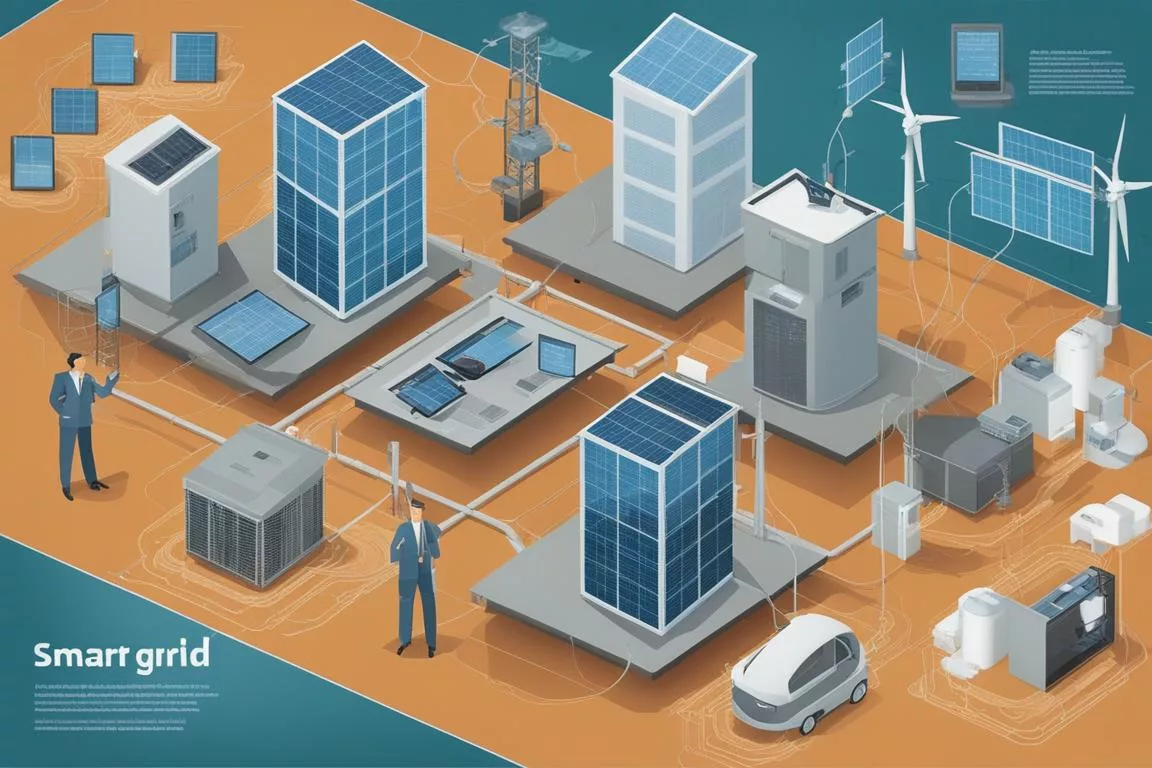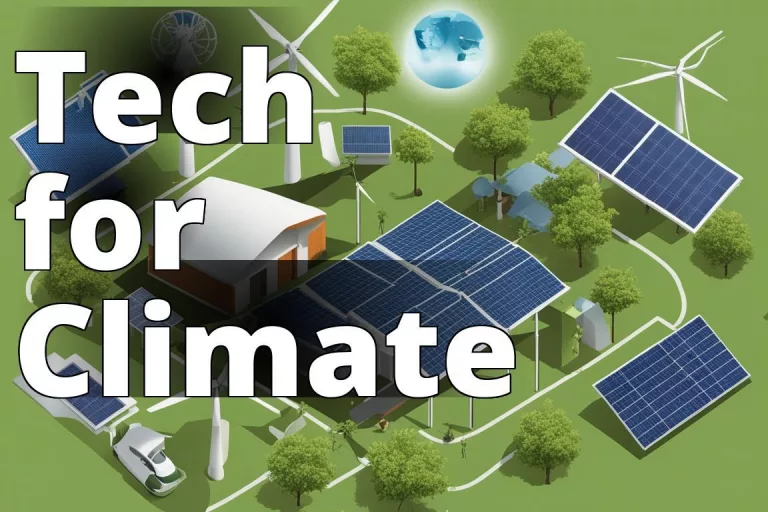Climate change is not a distant threat; it’s an immediate challenge requiring innovative solutions. And technology, with its rapid evolution and adaptability, is stepping up to the plate in a big way. From the depths of the ocean to the expanse of the skies, technology is being harnessed to combat the carbon emissions that are warming our planet. In this article, we’ll dive into the 15 key technologies that are making a significant impact. These aren’t just hopeful concepts; they’re real, tangible solutions that are making a difference today.
What You Will Learn
You will learn about various technologies used in climate action.
- Role of technology in fighting climate change
- Key tech solutions for climate action
- Importance of climate data analytics
How technology can help fight climate change
Let’s get one thing straight: technology alone won’t solve climate change. But when combined with policy changes and societal shifts, it can play a pivotal role in reducing our carbon footprint. Innovative technologies can help us capture carbon, produce energy more efficiently, and even change the way we live and move. The battle against climate change is multifaceted, and technology is one of the powerful tools in our arsenal.
1. Carbon capture and storage
Carbon capture and storage (CCS) sounds like something out of a sci-fi novel, but it’s a technology that’s being used right now. It involves capturing carbon dioxide emissions from sources like power plants and then transporting it to a storage site where it’s injected deep underground. This prevents the carbon from entering the atmosphere. It’s not without its controversies and challenges, but CCS has the potential to significantly reduce emissions from the industrial sector.
Insider Tip: Keep an eye on advancements in CCS technologies. Efficiency and cost-effectiveness are the keys to their wider adoption.
2. Solar power

Solar power is no longer just an alternative; it’s becoming a mainstream energy source. The technology has advanced leaps and bounds, making solar panels more efficient and less expensive. This is crucial because the more accessible solar power becomes, the more it can be used to replace fossil fuels. Plus, innovations like floating solar panels are opening up new possibilities for energy generation.
3. Electric vehicles
The shift from gasoline-powered vehicles to electric vehicles (EVs) is a game-changer for reducing emissions. EVs produce zero emissions at the tailpipe and, when charged with renewable energy, can be a truly clean transportation option. The market is expanding rapidly, with more affordable models and an increasing number of charging stations making EVs more accessible to the general public.
4. Nuclear power
Nuclear power is a contentious topic, but it’s impossible to deny its potential for providing large amounts of carbon-free electricity. Modern nuclear reactors are designed with safety and efficiency in mind. While nuclear power comes with its own set of environmental and safety concerns, it remains a significant part of the conversation on reducing carbon emissions.
5. Hydrogen power
Hydrogen power is on the rise as a clean energy carrier. It can be produced from various sources and used in fuel cells to generate electricity, or directly in vehicles and industrial processes. The key to its climate benefits is producing “green hydrogen” using renewable energy, which emits no carbon in the process.
6. Battery storage
The revolution in battery technology is not just powering our smartphones and laptops but also enabling the wider adoption of renewable energy. Large-scale battery storage systems can store excess energy generated from renewable sources and release it when demand is high, stabilizing the grid and reducing reliance on fossil fuels.
7. Wind power
Wind power is a mature technology that’s been used for centuries, but modern wind turbines are more efficient than ever. Offshore wind farms, in particular, offer vast potential due to stronger and more consistent winds. They can generate huge amounts of electricity with minimal environmental impact.
8. Sustainable aviation fuel
Aviation is a hard-to-decarbonize sector, but sustainable aviation fuel (SAF) offers a promising solution. Made from renewable resources, SAF can significantly reduce the carbon footprint of flying. While it’s currently more expensive than traditional jet fuel, advancements and policy support could make SAF a key player in greening the aviation industry.
9. Direct air capture
Direct air capture (DAC) is a technology that literally sucks carbon dioxide out of the air. It’s a fascinating concept with the potential to remove emissions from the atmosphere directly. DAC is still in its early stages and faces challenges in terms of scalability and cost, but it represents an innovative approach to mitigating climate change.
10. Bioenergy with carbon capture and storage (BECCS)
BECCS combines bioenergy production with carbon capture and storage, offering a way to produce energy while potentially achieving negative emissions. By using biomass as a fuel source and capturing the resulting carbon emissions, BECCS can help reduce the concentration of CO2 in the atmosphere.
11. Smart grids

Smart grids use digital technology to monitor and manage the transport of electricity from all generation sources to meet the varying electricity demands. They can integrate renewable energy sources more effectively, improve system reliability, and optimize energy use, which is crucial for reducing emissions.
12. Sustainable agriculture
Sustainable agriculture practices, supported by technology, can significantly reduce emissions from one of the most critical sectors: food production. Precision farming, for example, uses data and technology to make farming more efficient, reducing the need for fertilizers and water and lowering emissions.
13. Green buildings
Green building technologies focus on reducing the environmental impact of buildings through energy efficiency, sustainable materials, and design principles that minimize energy use. From smart thermostats to high-performance insulation, green buildings can dramatically reduce the carbon footprint of the built environment.
14. Sustainable forestry
Sustainable forestry technologies help manage forests in a way that maintains their biodiversity, productivity, and carbon sequestration capabilities. This includes monitoring technologies that can track forest health and growth, ensuring that forests continue to act as vital carbon sinks.
15. Climate data analytics
The power of big data is being harnessed to tackle climate change through climate data analytics. This technology can provide insights into climate trends, help optimize renewable energy production, and improve disaster response strategies. By understanding and predicting climate patterns, we can make more informed decisions to protect our planet.
Conclusion
The fight against climate change is complex and challenging, but these 15 technologies provide a beacon of hope. From capturing carbon to revolutionizing how we generate and use energy, technology is at the forefront of the battle to reduce emissions and protect our planet. It’s a reminder that human ingenuity can tackle even the most daunting challenges, especially when it’s powered by a commitment to sustainability and innovation.
Remember, every one of us plays a role in this fight. By supporting policies that encourage the adoption of these technologies and making sustainable choices in our own lives, we can collectively make a significant impact. The future is in our hands, and together, we can pave the way to a cleaner, greener world.
Learn more about how technology is being used in public policy for climate action.
Common Questions
Who is using technology in climate action?
Governments, businesses, and individuals are using technology to address climate change.
What role does technology play in climate action?
Technology helps in monitoring, reducing emissions, and promoting sustainable practices.
How can technology help in climate change mitigation?
Technology can enable renewable energy adoption and improve energy efficiency.
What if I am not tech-savvy, can I still contribute?
Yes, there are user-friendly tech tools and resources available for everyone to participate in climate action.
What are some objections to using technology for climate action?
Some may argue that technology itself can have environmental impacts, but sustainable tech solutions are being developed.
How can businesses benefit from using technology for climate action?
Businesses can improve their sustainability, reduce costs, and gain a competitive edge by leveraging technology for climate action.
Next Steps
Round Table Environmental Informatics (RTEI) is a consulting firm that helps our clients to leverage digital technologies for environmental analytics. We offer free consultations to discuss how we at RTEI can help you.


